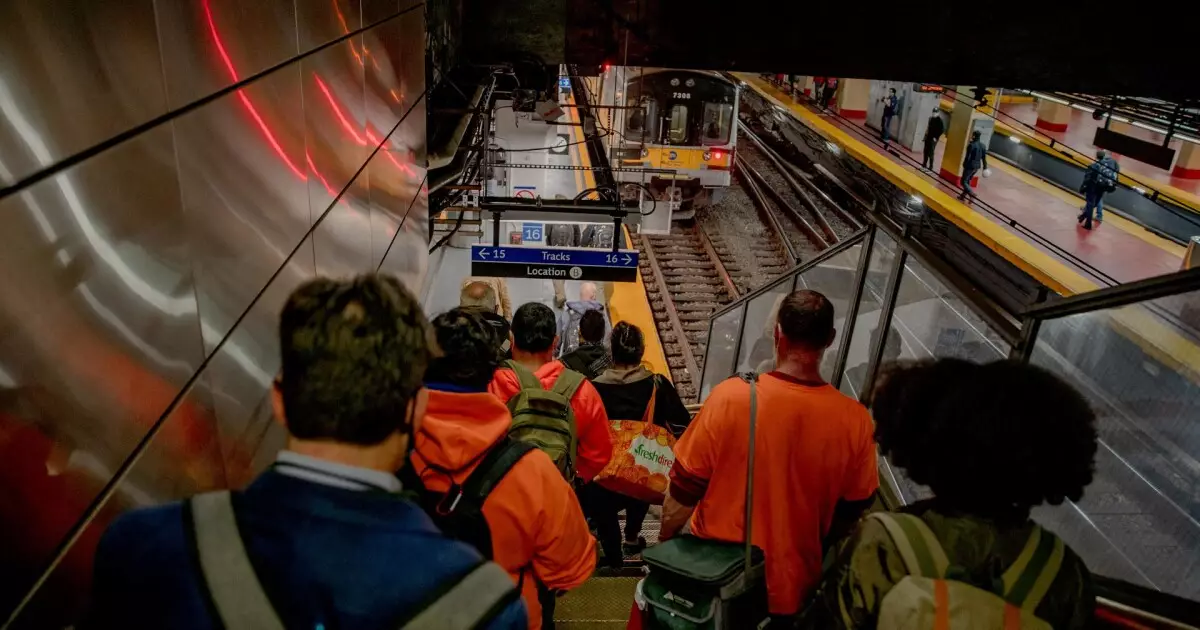The Trump administration’s recent initiative to commandeer the monumental $7 billion renovation of New York’s Pennsylvania Station certainly raises eyebrows and questions about the governance of infrastructure projects. By removing the Metropolitan Transportation Authority (MTA) from the forefront and reinstating Amtrak as the project leader, this maneuver signals more than just a shift in power dynamics; it showcases an administration willing to take decisive actions amid controversies surrounding public transportation management and financing.
While supporters may herald this as a step toward effective governance, it invites skepticism regarding the potential implications for taxpayer money and regulatory oversight. Secretary of Transportation Sean Duffy’s announcement to cut federal grants—highlighted as a money-saving measure—ultimately aims to drown inefficiencies in what has historically been a murky governance arena. This new direction poses the question: is this a calculated attempt to optimize funding, or merely an aggressive political maneuver to consolidate power in the face of MTA mismanagement?
Political Ramifications and Public Sentiment
New York Governor Kathy Hochul’s lauding of this decision, thanking Trump for “taking on the sole responsibility” for the renovations, reflects a complex relationship between state and federal bodies. While Hochul paints this as a triumph for New Yorkers, many citizens may perceive it differently. Is it really a “major victory” when citizens of New York continuously encounter bumps in an already convoluted public transit system?
Dismissing the MTA as an inefficient entity to promote a more central leadership structure raises thoughts about accountability and transparency. Public transit in a sprawling urban setting demands collaborative governance – a push-and-pull between state and federal interests. The move against congestion pricing, a contentious topic reflecting the clash between commuters and city budgets, pits the federal government’s priorities directly against the needs of urban dwellers who heavily rely on public transit options.
Concerns over Governance and Financial Management
The administration’s discontent with the MTA’s leadership, marked by accusations of “inefficiency, waste, and mismanagement,” may resonate with taxpayers fed up with the status quo. However, destabilizing an avenue for public input by overriding local governance also ignites fears of increased overreach. With the looming threat to withhold federal funding for non-compliance with data requests about transit crime, one can’t ignore the underlying tension: federal versus state authority.
This tension brings to the forefront not only the efficacy of public spending but the philosophy governing public service. Are we inviting a return to a top-down governance model that disregards localized knowledge for a singular, federal vision? In a nation that champions localized decision-making, this federal security blanket may deter innovation on the ground level.
A Vision for the Future Revisited
Plans to transform Pennsylvania Station into a single-level facility with modern amenities and mixed-income housing sounds promising and ambitious. However, the track record of the parties involved must be considered seriously. Can Amtrak and a central government really deliver a vision that serves the community rather than their political interests?
Hochul’s revisions to the original blueprint, which was pushed by former Governor Andrew Cuomo, highlighted a shift toward broader community needs. But is a unified directive from Washington really aligned with New York’s complexities? The usage of federal funds to circumvent local turmoil could very well lead to a temporary fix rather than a sustainable solution.
Recent claims by MTA CEO Janno Lieber that improvements have been executed “on time and under budget” could evoke skepticism, particularly in the context of a long history of MTA failures. A hopeful public may rally behind the notion that federal intervention heralds substantial improvements; however, skepticism is the cornerstone of a fully-functioning democracy.
As this high-stakes drama unfolds, with dollars and lives at stake, it encourages all of us to revisit what should guide our public transit systems: whether pragmatic federal oversight or collaborative governance that prioritizes local needs for a thriving urban future.


Leave a Reply